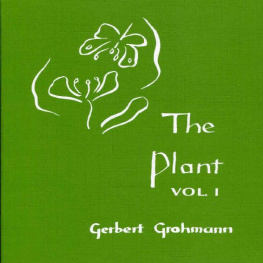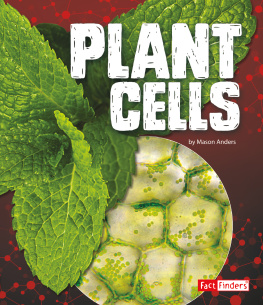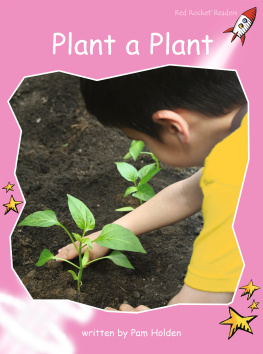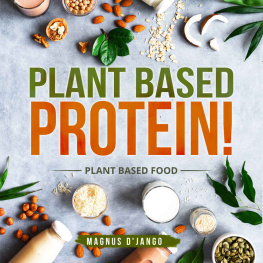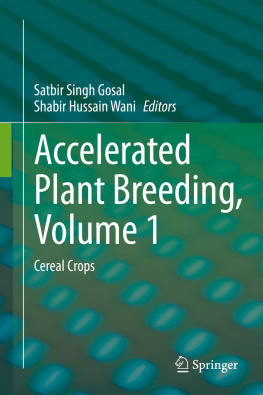Gerbert Grohmann - The Plant, Volume 2
Here you can read online Gerbert Grohmann - The Plant, Volume 2 full text of the book (entire story) in english for free. Download pdf and epub, get meaning, cover and reviews about this ebook. year: 1988, publisher: Biodynamic Farming & Gardening Association, genre: Religion. Description of the work, (preface) as well as reviews are available. Best literature library LitArk.com created for fans of good reading and offers a wide selection of genres:
Romance novel
Science fiction
Adventure
Detective
Science
History
Home and family
Prose
Art
Politics
Computer
Non-fiction
Religion
Business
Children
Humor
Choose a favorite category and find really read worthwhile books. Enjoy immersion in the world of imagination, feel the emotions of the characters or learn something new for yourself, make an fascinating discovery.
- Book:The Plant, Volume 2
- Author:
- Publisher:Biodynamic Farming & Gardening Association
- Genre:
- Year:1988
- Rating:5 / 5
- Favourites:Add to favourites
- Your mark:
- 100
- 1
- 2
- 3
- 4
- 5
The Plant, Volume 2: summary, description and annotation
We offer to read an annotation, description, summary or preface (depends on what the author of the book "The Plant, Volume 2" wrote himself). If you haven't found the necessary information about the book — write in the comments, we will try to find it.
The Plant, Volume 2 — read online for free the complete book (whole text) full work
Below is the text of the book, divided by pages. System saving the place of the last page read, allows you to conveniently read the book "The Plant, Volume 2" online for free, without having to search again every time where you left off. Put a bookmark, and you can go to the page where you finished reading at any time.
Font size:
Interval:
Bookmark:

First Printed 1989
Translation of the second edition in German of Die Pflanze, Zweiter Band, by G. Grohmann, Stuttgart, 1968. Published by permission of Verlag Freies Geistesleben, Stuttgart.
This translation
Bio Dynamic Literature,
Kimberton, Pa 19442 1989
Illustrations, except where otherwise stated, are original drawings or photographs by the author.
Printed in U.S.A.
ISBN 0 938250 24 8
Typeset by An Griann, Calais.
This second volume of The Plant is based on what was developed in Volume I. The two volumes are interdependent. This is mentioned because certain difficulties could arise for readers not familiar with Volume I; also references to the first volume often occur in the text.
For those who know Volume I it should be added that in this volume we have used concepts and results from spiritual-scientific research to understand more deeply the significance of nature's forms and images. The author is aware that he is demanding much from readers who are not familiar with Rudolf Steiner's spiritual science, for this can so enormously widen one's understanding of the plant world that it is almost indispensable. He is also aware that for this reason the second volume may not be received as favourably by some readersand reviewersas the first. But the real value of a book is not determined by its immediate impact. The reader will find that the contents of this book require more than mere reading. One must live with it in order to grasp its meaning intuitively. Though clarity of expression has been the aim, nevertheless, the book will not always be easy to read.
The author makes no claim to finality. Specialists among readers, who may feel that much is demanded of them, should understand that it is hoped that this work will stimulate further ideas. The vistas opened up by spiritual science are so vast and so revolutionary that no single person can attempt to develop the ideas without falling into errors and leaving much undone. It takes courage to confront the public with views so different in many ways from those officially accepted. This however does not alter the author's convictions. The reader should be warned that with a book like this it is really impossible to take isolated facts and criticise them out of their context. This sort of reading will be unsatisfactory. Only when the book is read as a whole will each phenomenon appear alive and convincing, seen against the whole background.
The method employed is discussed in the conclusion.
Finally it only remains to express my thanks to all those whose work has stimulated and inspired me. As far as possible, I have included acknowledgments in the text.
Especially valued was the kindly interest that Dr. Friedrich A. Kipp took in the production of this book.
StuttgartSpring 1951.
GERBERT GROHMANN
* * * * *
All photographs, except are reproduced from original drawings by Thomas Gbel.
The fact that ten years after the death of Gerbert Grohmann a new edition of the second volume of The Plant is appearing is witness to the great and enduring interest still aroused by this book which can already be termed a classic.
The endeavours of Grohmann are particularly noteworthy because they express a concern which extends far beyond the scope of botany. Few people see the danger that lies behind the one-sided striving of natural science towards mathematical abstraction. This has led to mankind losing its connection with living nature not only in science but also in practical life.
A certain concern for the protection of nature or the environment arising from the feelings or from the urge of self-preservation does not suffice to check this development, any more than does a study of morphology originating indeed from Goethe's ideas but killed in a desert of classification and diagrams. Grohmann, on the other hand, stimulates a living imaginative observation of the plant world which in practice leads to a more conscious and inward relationship between man and plant. This activity opens the way not only to a deeper understanding of the plant world but also of the human being. This book contains many hints and suggestions for the natural scientist wanting to develop a spiritually orientated botany and also for those who would search for a deeper joy in their association with the world of plants.
The author would certainly never have allowed a new edition to appear without enlarging and reshaping some parts in order to take account of new advances in knowledge. Careful consideration, nevertheless, led to the decision to leave the text unaltered and only replace some of the illustrations for the sake of better reproduction. A revision of the work in the manner of a textbook would take away its original character.
We would like to express warm thanks to Thomas Gbel for the full-page drawings which were especially made for this new edition.
JOCHEN BOCKEMHL
(Leader of the Natural Science Section of the Goetheanum, Switzerland.)
The translators have amended one or two statistical figures which were very out of date.
There is no other indigenous family of plants that expresses so well as the buttercup family the essential element in plant lifemetamorphosis, the transformation of one form into another. When the phenomena are looked at thoughtfully in the right way, there appear behind them formative processes connected with the whole earth organism. This matter has been dealt with in Volume I and it is therefore unnecessary to explain again in detail leaf metamorphosis and the transformation from leaf to flower.
A characteristic of the Ranunculaceae is the way they express their life in their leaves. Woody plants are rare in this family, as is also the production of juicy or fleshy fruits. Most like to grow in damp places; some are bog or aquatic plants. Leaves and flowers develop mainly during the moist season. Most species have completed their vegetative period before the summer heat. In this they differ from the rose family, for example, with which otherwise they have many things in common.
Nothing could characterise them better than describing them as leaf plants. All special features of this family, with its multitude of forms, are derivations of the common leaf type and fit in with it. What a wealth of leaf metamorphoses is to be found in the genus Ranunculus alone! The picture becomes even more complete if one adds other genera of the family, because one of them often picks up the metamorphosis where another genus has left off and the result can be that several genera together can yield a complete series. The Ranunculus family are consumate artists in metamorphosis. They are leafy right into the flower. The dividing line between leaf and petal is often blurred, as we shall see later.
Trees do not occur among the Ranunculaceae because the family has not found a definite connection with the solid mineral earth, but has made a very strong one with all watery processes. The flowers quite often have diverse forms of nectaries yielding freely of their nectar. In a certain sense one could consider this family as aquatic plants lifted up into the air. Their amphibious character is even expressed in the name (Lat. rana = frog).
One can also try to understand the leafthis most important plant organin connection with the whole earth. In spite of many deviations, the leaf represents the
Next pageFont size:
Interval:
Bookmark:
Similar books «The Plant, Volume 2»
Look at similar books to The Plant, Volume 2. We have selected literature similar in name and meaning in the hope of providing readers with more options to find new, interesting, not yet read works.
Discussion, reviews of the book The Plant, Volume 2 and just readers' own opinions. Leave your comments, write what you think about the work, its meaning or the main characters. Specify what exactly you liked and what you didn't like, and why you think so.


